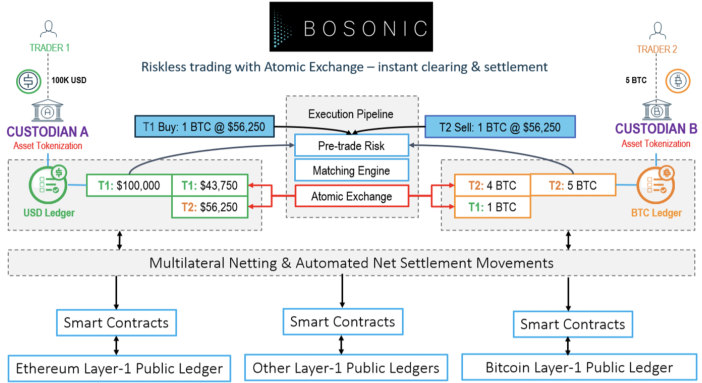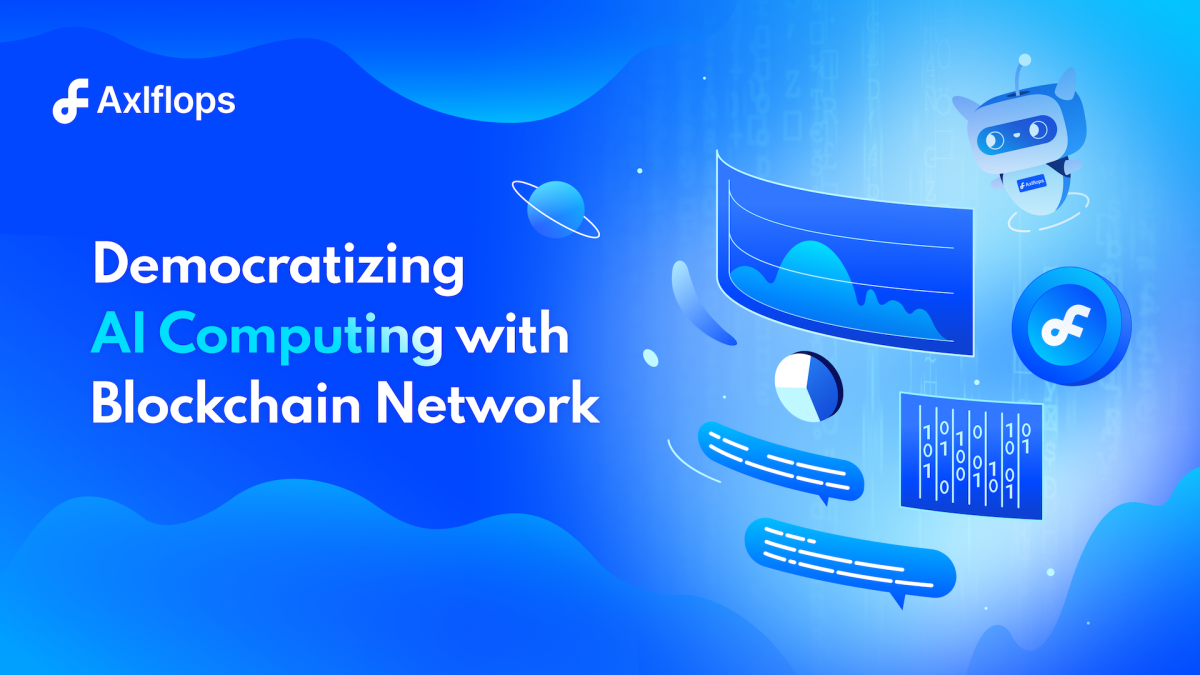
Atomic Exchange – What is it? Why does it matter?


Quick Take
- Atomic is a computer science term that generally means “irreducible” and “Atomicity” is the first word in the acronym ACID as it relates to guaranteeing transaction integrity in database technologies
- In the context of trading, an Atomic Swap or Atomic Exchange means to exchange one asset for another as a single logical transaction (irreducible) that is implemented in a way where it is either a total success or a total failure (guaranteed transaction integrity)
- Bilateral settlement is the opposite of Atomic Exchange and is high risk (e.g., counterparty 1 goes first and sends assets to counterparty 2 and hopes counterparty 2 will send assets to counterparty 1 in return – this is how most of the crypto market functions today and is not acceptable to fiduciaries and regulated institutions)
- Atomic Exchange on the Bosonic Network is real-time, high-frequency execution on a Layer 2 multi-custodian blockchain network
- Bosonic’s Layer 2 can support real-time Atomic Exchange between clients with assets at a Custodian, including Fiat currencies, and clients that self-custody Crypto in their own wallet, by leveraging Layer 1 Smart Contracts
- Trade execution on the Bosonic Network is on-chain, i.e., the trade is the settlement
Cross-chain Atomic Swaps (aka Atomic Exchange) have existed since 2013 with Hashed Timelock Contracts (HTLCs). In 2018, Bosonic was the first company in the world to perform an Atomic Exchange between Fiat and Crypto using a Layer 2 blockchain solution with no credit or settlement risk for the trading counterparties.
The problem with Layer 1 Atomic Swaps is that they only work for assets that are natively digital and on-chain, and they are processed one-by-one using Layer 1 transactions with standard gas fees and network transaction times, besides the delay of the timelock variable in the Smart Contract. Atomic swaps are slow and cause the counterparties to be illiquid for an extended period of time and create a “free option” problem due to the length of the timelock variable that extends well beyond initial price discovery. Atomic Swaps using HTLCs can actually have some counterparty risk because of how the “shared secret” allows for assets on both sides to be withdrawn, which, when coupled with the timelock expiry, could result in one of the counterparties withdrawing both assets.
While this may be acceptable for one-off trades between technically sophisticated individuals that are willing to take certain risks, institutional and high-frequency trading must operate at much higher velocity without physically moving assets on Layer 1 for each trading transaction, and without such risks. Layer 2 solutions seek to address this problem, but implementations vary widely and generally are pegged to a particular public ledger protocol, usually Ethereum, and may not be suitable for certain use cases.
The Bosonic Network™ is a permissioned multi-custodian Layer 2 blockchain network that makes it possible to tokenize any asset a custodian holds on behalf of their clients, whether non-natively digital like Fiat currencies or natively digital like Crypto. This type of Layer 2 network maintains cryptographic provability of the underlying assets and the ownership chain, much like a Layer 1 public blockchain protocol does, but with extremely high-performance Atomic Exchange that is integrated into traditional trading technology. Because of how the Layer 2 is architected, it can bridge between assets that are not natively digital and all Layer 1 protocols.
An Atomic Exchange on the Bosonic Network is implemented as follows:
- Clients hold assets in their own accounts at custodians on the Bosonic Network
- Custodians use the Bosonic provided technology to create blockchain ledgers in their node for each asset they wish to represent client ownership for on the network
- Custodians can, at client request, tokenize client assets onto the custodial blockchain ledgers after locking them down in the client’s account or wallet, and making them available on the Bosonic Network with cryptographic provability
- Traditional trading technology components like Bosonic’s real-time, pre-trade risk engine, are reading the client’s UTXO set (their provable assets) off of the custodial blockchain ledgers
- Orders that clear pre-trade risk are added to the global consolidated order book for matching (with Lit or Dark Pool options)
- Trades execute as an Atomic Exchange on the custodial Layer 2 blockchain ledgers concurrently (i.e., atomically) changing ownership of the underlying assets on-chain in milliseconds as a single transaction on the two Layer 2 blockchain ledgers
- Trade execution as an Atomic Exchange is either a total success or total failure, execution reports are sent to clients after the Atomic Exchange
- Trades are continuously netted and custodians periodically perform net settlement movements which get recorded on Layer 1 public ledgers and Fiat accounts
Trades are therefore Payment vs. Payment (PvP) with clearing and settlement happening in real time, with no counterparty credit or settlement risk, and with full net settlement automation. One critical thing to note is that because of this unique implementation, Bosonic does not need to custody client assets. Delivery vs Payment (DvP) settlement systems require that either (1) the party performing the DvP service custody assets for both sides of the trade for the trading parties (e.g., Paxos) or (2) that one counterparty must make payment first for what is to be delivered, which usually requires some sort of intermediary to use their balance sheet to guarantee the counterparties against loss (e.g., a Prime Broker using balance sheet).
The Bosonic Network also bridges clients with assets held at brick-and-mortar custodians with clients who self-custody using various wallet technologies, e.g., Fireblocks or MetaMask Institutional, by leveraging Layer 1 Smart Contracts secured by the Ethereum network to transact on ETH and the full range of ERC-20 tokens, as well as leveraging RSK for Smart Contracts that transact BTC and are secured by the Bitcoin network. By tokenizing assets locked in Layer 1 Smart Contracts onto the Layer 2 blockchain network, Atomic Exchange of assets is still executed at high frequency without the cost and slowness of moving assets on Layer 1 public ledgers. Layer 1 public ledger movements are only necessary for periodic net settlement movements based on the business requirements of the custodians and the clients.
In conclusion, for institutional trading of Fiat and Crypto with no counterparty credit or settlement risk, and the highest velocity of capital and capital efficiency, you need high performance Atomic Exchange of value. Bosonic’s globally unique multi-patent pending technology can help.
© 2023 The Block. All Rights Reserved. This article is provided for informational purposes only. It is not offered or intended to be used as legal, tax, investment, financial, or other advice.

